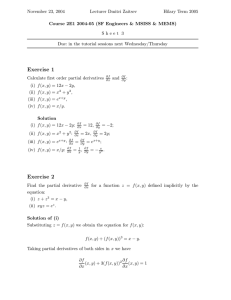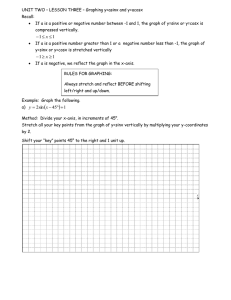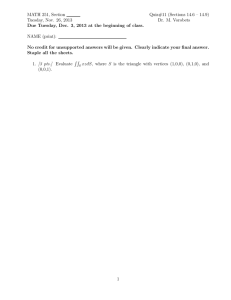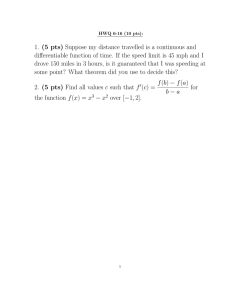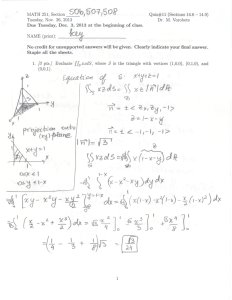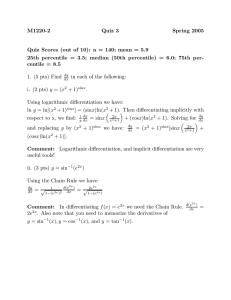M1220-2 Quiz 1 Solutions Spring 2005
advertisement
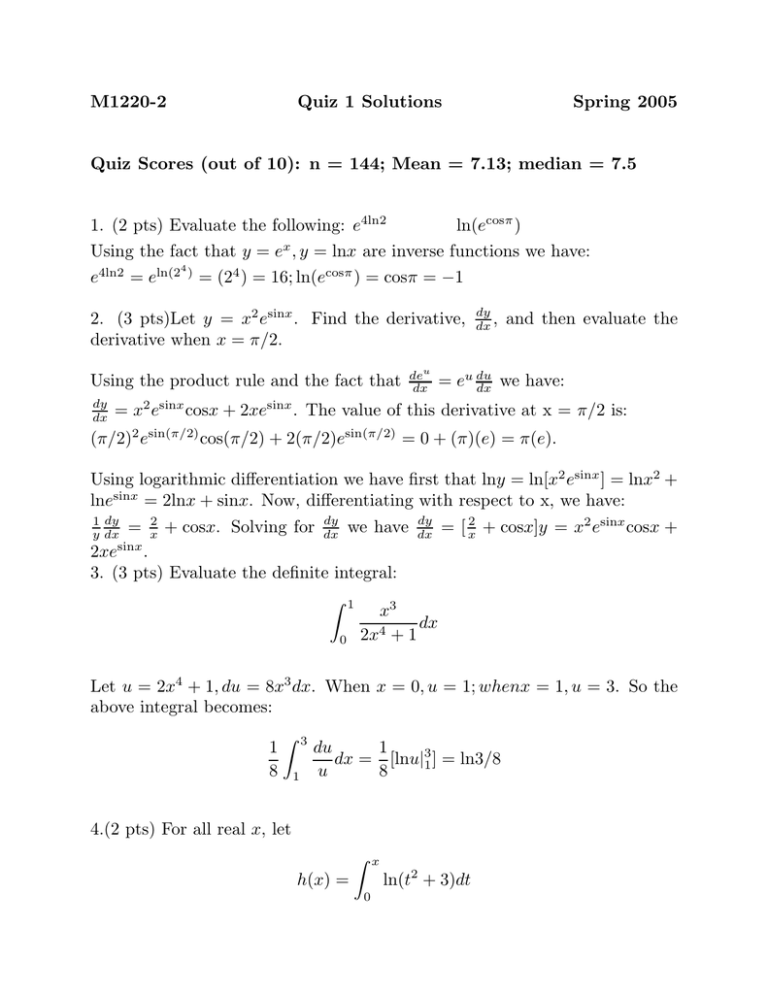
M1220-2 Quiz 1 Solutions Spring 2005 Quiz Scores (out of 10): n = 144; Mean = 7.13; median = 7.5 1. (2 pts) Evaluate the following: e4ln2 ln(ecosπ ) Using the fact that y = ex , y = lnx are inverse functions we have: 4 e4ln2 = eln(2 ) = (24 ) = 16; ln(ecosπ ) = cosπ = −1 2. (3 pts)Let y = x2 esinx . Find the derivative, derivative when x = π/2. Using the product rule and the fact that dy dx deu dx dy , dx and then evaluate the = eu du dx we have: = x2 esinx cosx + 2xesinx . The value of this derivative at x = π/2 is: (π/2)2 esin(π/2) cos(π/2) + 2(π/2)esin(π/2) = 0 + (π)(e) = π(e). Using logarithmic differentiation we have first that lny = ln[x2 esinx ] = lnx2 + lnesinx = 2lnx + sinx. Now, differentiating with respect to x, we have: dy dy 2 2 1 dy 2 sinx cosx + y dx = x + cosx. Solving for dx we have dx = [ x + cosx]y = x e sinx 2xe . 3. (3 pts) Evaluate the definite integral: Z 1 x3 dx 4 0 2x + 1 Let u = 2x4 + 1, du = 8x3 dx. When x = 0, u = 1; whenx = 1, u = 3. So the above integral becomes: 1 8 Z 3 1 du 1 dx = [lnu|31 ] = ln3/8 u 8 4.(2 pts) For all real x, let h(x) = Z x ln(t2 + 3)dt 0 . i. What is h′ (x)? By the First Fundamental Theorem of Calculus, h′ (x) = ln(x2 + 3). (Note that f (t) = ln(t2 + 3) is a continuous function for all t so the theorem does apply.) ii. The function h(x) has an inverse function. Briefly state why. (Hint: Use h′ (x)). Since h′ (x) = ln(x2 + 3) > 0 for all x, the function h is strictly increasing and by Theorem A (7.2), h has an inverse.

